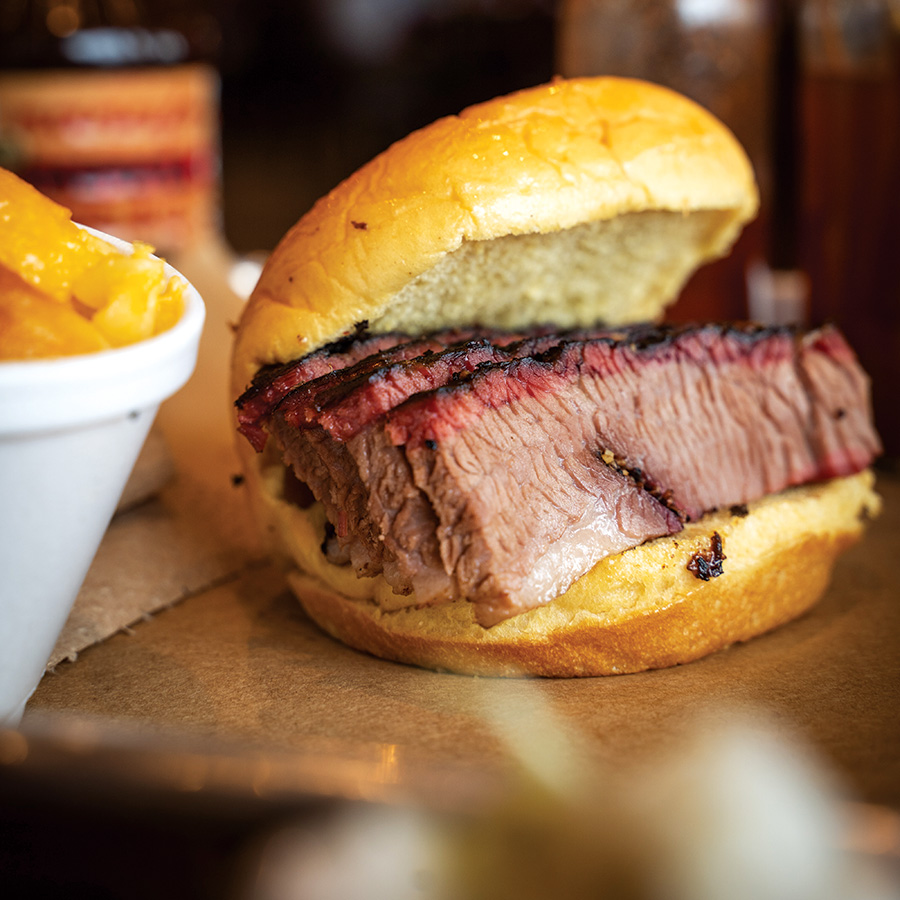It emerges from the smoke a charred and smoldering wreck like a stone belched from the maw of some malignant volcano, flecked here and there with granules as though dragged across an ashen and rocky terrain. This lump of burned matter glows with heat and primordial evocations, altogether a thing that is both a beginning and an ending. This thing is also edible and, as Nancy Krohngold of Nancy’s Bar-B-Q tells it, “the most ornery cut of meat.” It is smoked brisket, the monstrous, gelatinous and, in exceedingly rare cases, delicious slab of beef that demands more care in its preparation than just about any other meat.
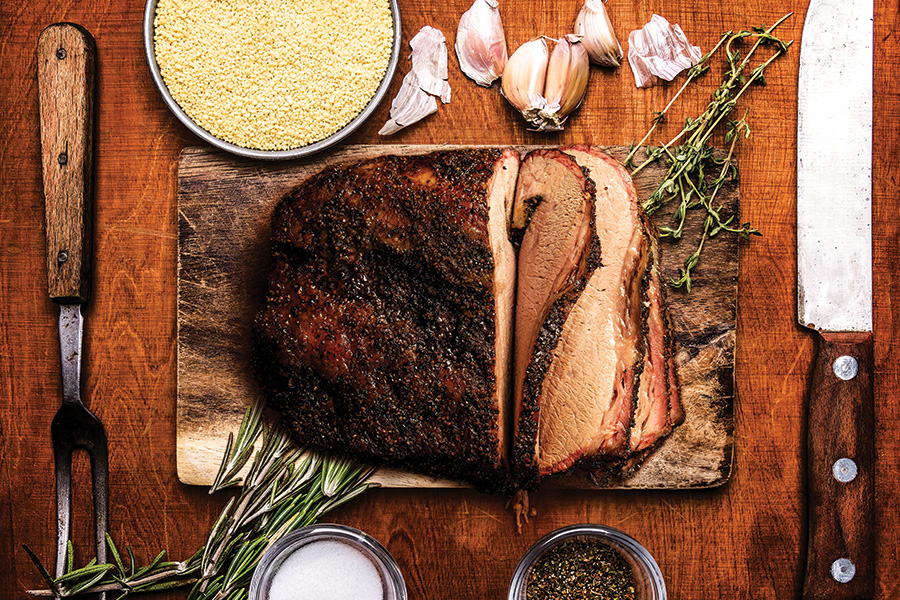
PHOTOGRAPHY BY WYATT KOSTYGAN
“First of all, a brisket is really two entirely different cuts of meat,” says Krohngold. A whole beef brisket is comprised of the deckle, which contains most of the fat, and the flat, which is lean. The fibers in these two sections run in all directions like a confusing highway interchange and a dense mass of connective tissue binds them together, a portion of which must be carved out before smoking. Where pork butts are more forgiving on account of their more even distribution of fat, smoking a brisket is as precarious as entering the home of a bear family and selecting from three servings of soup. Cooked too long or too hot and the flat crumbles into a dry wreck, not cooked long enough, and the fat in the deckle remains un-rendered, making it chewy and inconsistent.
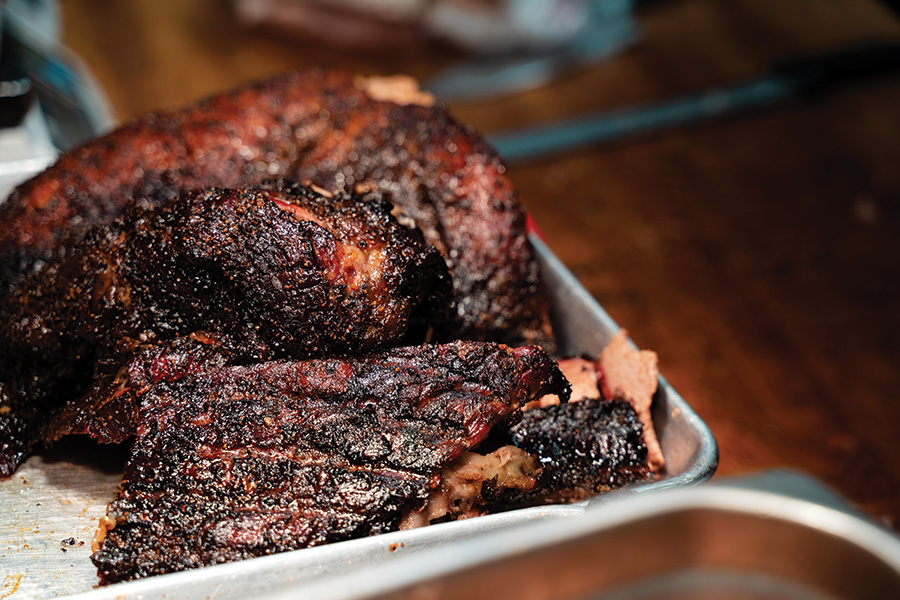
PHOTOGRAPHY BY WYATT KOSTYGAN
“It’s tricky to get the whole thing to cook evenly,” she says. Smoke management (and patience) is the most difficult skill to hone in pursuit of the perfect brisket. “You’ll screw up two or three before you get it right,” jokes Washington Perry of Perry’s Original Roadside BBQ. Mr. Perry admits it took him about six years to master the art of low and slow. To complicate matters further, he uses two different kinds of wood: oak and pecan. Well-seasoned oak burns evenly and turns readily into charcoal, those glowing embers that generate the consistent heat needed for low-temperature, indirect cooking while the bark helps to generate smoke. Pecan wood adds a touch of sweetness and nuttiness to the meat, though most pitmasters would not recommend the use of pecan exclusively. Like mesquite, the flavor of pecan can overtake the flavor of the meat and rub, rendering each of them useless. Of course, wood is a naturally occurring commodity subject to variations like any other living thing. The way it burns will depend on how well it’s seasoned, how thick it’s cut, the climate it came from and its exact species. Like the brisket itself, no two logs are exactly the same, and in the imprecise science of smoking, a degree of supervision is warranted.
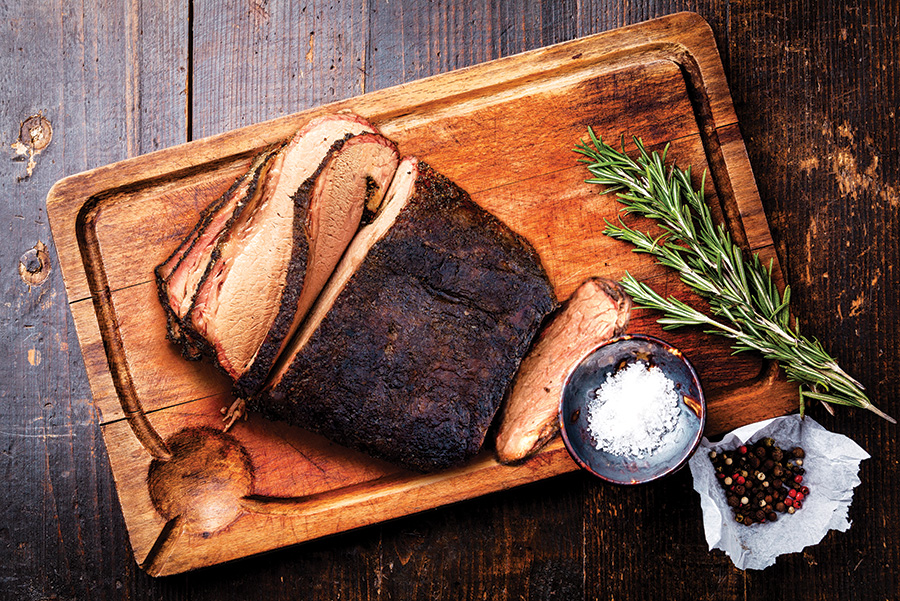
PHOTOGRAPHY BY WYATT KOSTYGAN
“The first time I smoked something low and slow it was a pork butt on a little Weber kettle grill,” says Krohngold. “I started at six at night and was up every hour to check on it. You’re exhausted by the time you deliver it.” Many purist pitmasters still operate this way. The 85-year-old Tootsie Tomanetz of Snow’s BBQ in Lexington, Texas—recently featured in the first episode of Netflix’s Chef’s Table: BBQ gets up in the wee hours of Saturday morning to start the fires. She still waddles around the pits with a sauce mop and a shovel, carrying oak coals to and from monolithic smokers, dabbing the meat with her wand, toiling like Mickey Mouse in Fantasia in pursuit of some alchemical transmutation.
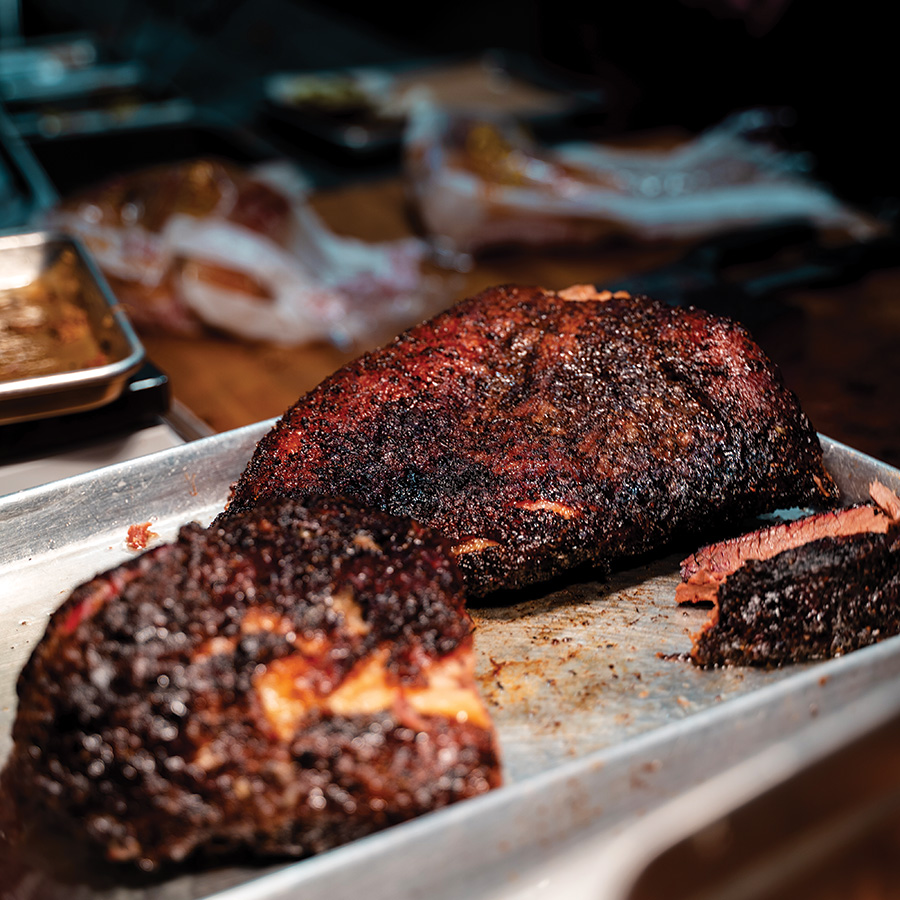
PHOTOGRAPHY BY WYATT KOSTYGAN
Ray Mabalot started out that way, too, minus the waddle. A plumber by day, Mabalot’s BBQ outfit, Mouthole BBQ, began as something between a passion project and a hobby. “I’m a premium cigar smoker,” he says, “and whenever my wife and I would have friends over for cigars and drinks, I’d smoke meat for everyone.” For these weekend gatherings, Mabalot would wrap up his grueling workweek, clean himself up a bit and prep his smoker for an all-nighter. “Starting the fire and getting the temp up is about an hour, then I’d be at the smoker every 45 minutes to add wood and rotate the meat,” he says. In between, Mabalot might catch 20 minutes of sleep. And so it went for the first four years of Mouthole’s existence. “I can’t even remember the last time I had a day off,” he says.
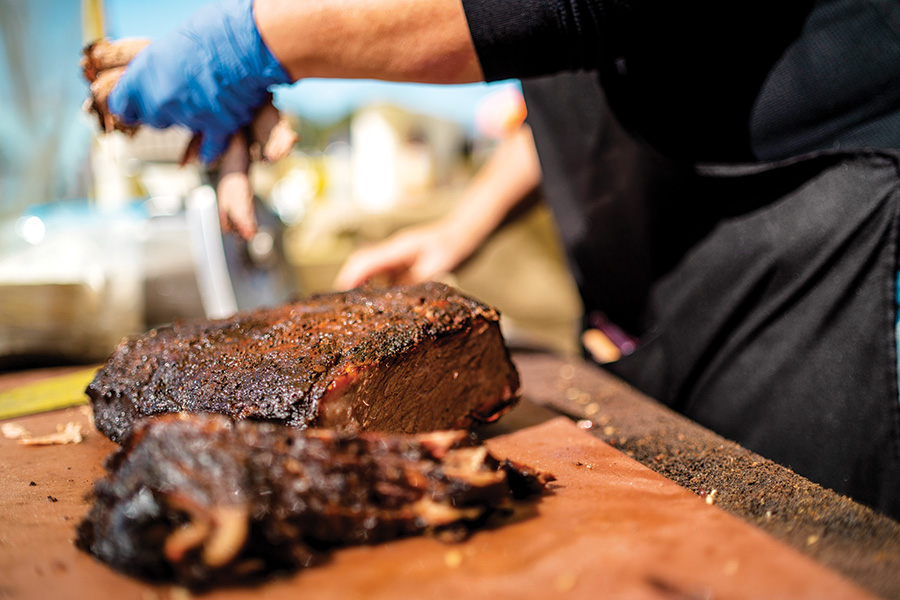
PHOTOGRAPHY BY WYATT KOSTYGAN
The sleepless nights and difficulty in achieving consistency when smoking briskets in large quantities have contributed to the rise of pellet smokers. Pellet smokers make use of wood bits that have been pressed into little vitamin-shaped pieces. These pellets burn more consistently than logs and are easier to manage. “I was totally against it at first,” says Mabalot, who expressed initial skepticism that pellet smoking could put a hard smoke on the meat. “But I finally gave in and tried it, got a full night’s sleep and none of our customers noticed a difference.” The thick smoke rings and textbook bark on his brisket support his claim.
The heart and soul of Krohngold’s operation is a commercial pellet smoker that releases pellets automatically throughout the night. “It beats the old drum where you’re up all night,” she says, and her particular model will even notify her in the middle of the night if the temperature falls outside of the parameters she programmed into it. “The key to success is consistency,” Krohngold says. Pellet smokers also take the guesswork and grunt work out of building and maintaining a fire. “When we started getting gigs during the week, I wanted my wife to be able to work the smoker on her own without having to fuss so much with a fire,” says Mabalot of Mouthole’s transition to pellet smokers and their ease of use compared to traditional hardwood smokers. Still, some pitmasters stick to the tried-and-true. Mr. Perry still uses chopped hardwood despite the allure of pellet smokers, with pallets of seasoned oak sitting outside of his operation in North Sarasota.
“I use a local tree trimmer, and every now and then he’ll run across an oak tree, cut it up, split it and put it to the side for me.” Between his usual start time in the afternoon and his years of experience, Mr. Perry manages to get some shut-eye despite using split wood instead of pellets, checking on his briskets every three to four hours throughout the day and trusting his process as a safeguard against over- and undercooked brisket. By the time a brisket comes out of either style of smoker, it has well over 12 hours of time invested in it. During those long hours inside a 200-degree, barrel-shaped container of metal, fire and smoke were coaxed into existence and guided around the hunk of meat as though by sorcerers of some crude and ancient magic. The process of “low and slow” is the only way to get that ornery meat to do the bidding of its pitmaster. “It’s why brisket can be so expensive at BBQ joints,” says Mabalot, “because it’s a lot of blood, sweat and tears to make it.” Such is the cost of taming the inferno.
SRQ





